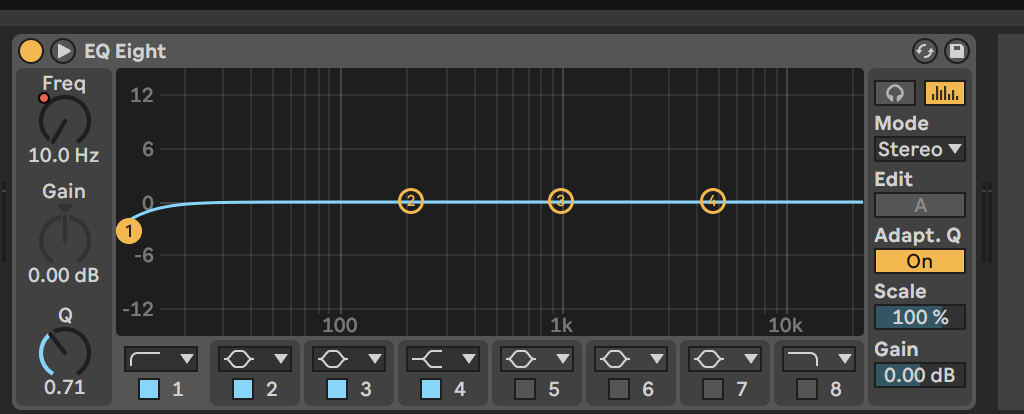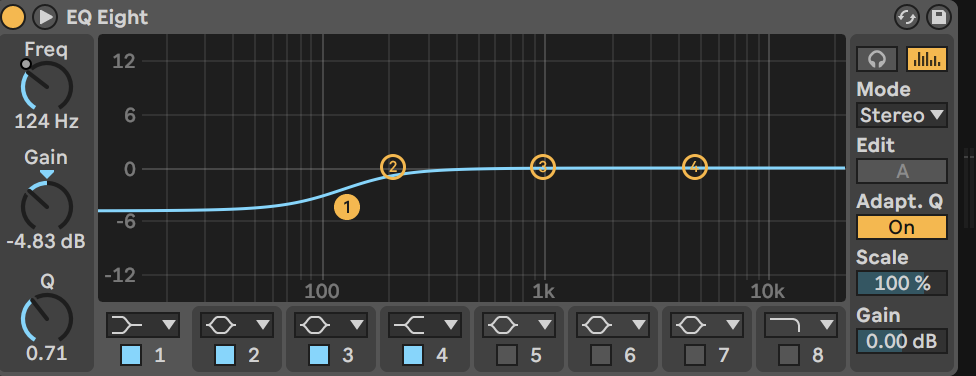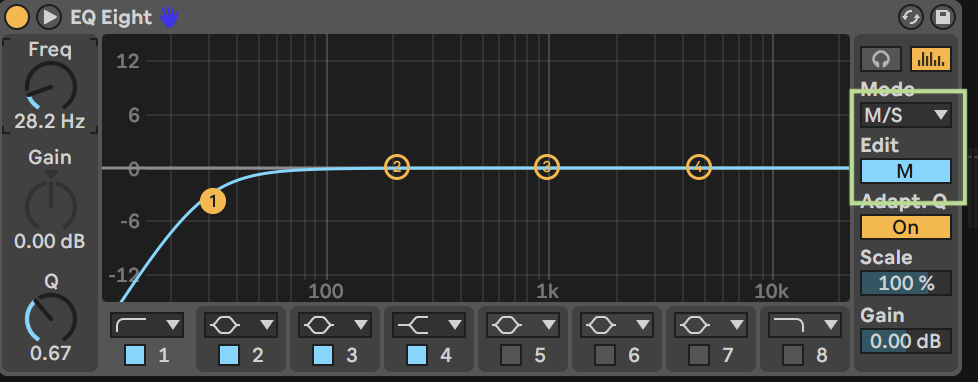When arranging electronic music, we often get fixated on things like chords, melody, drums ect. Its easy to forget some of the other, more subtle elements that make a track flow. In this post I’ll focus on transition elements, and how I use them.
I primarily work in Ableton, but these techniques will work in any other DAW.
Remember there is always a transition in, and out of a section, so you may need an effect to automate into a changing of sections, and automate out of a new section after the switch.
Filter Sweeps
One of the most basic transitional elements is a simple filter sweep. This is where you choose a filter, and automate the cutoff over time. 2 basic types of sweeps are the basic high, and low pass. The effect is to slowly limit the range of frequencies for an instrument to create contrast between sections.


So the idea here is to choose a high pass, and automate the cutoff up, or do the reverse for the low pass. This will create space and make it so the next section appears to hit harder on the transition. Another option for more a more subtle transition is to automate a shelf.

In this case I would keep the frequency fixed, but automate the gain downward on the low frequencies so that the low end gets subtle smaller, then jumps back in the next section.
Risers and Noise Sweeps
Another common technique I use, is risers, or sweeps. I used to use pre made ones from sample packs a while ago, but now I make all of them myself. It is relatively simple to make one. One of my favorite simple sweeps involves just white noise.

In this case I chose to use Operator, but you can use any instrument that makes noise. I just set the oscillator to white noise, but you can play around with different noise types, and layer them. On Operator I like to set the spread to 100%, then all I have to do is automate the cutoff frequency. I often make midi clips of a single sweep up and down, and at varying lengths.

I might do 2 bar sweep up, 2 bar sweep down, 1 up, 1 down, ect. This way I can easily copy and paste them around the track to smooth out transitions.
Stereo Image
Another trick for transitions, is manipulating the stereo image. This can be done a variety of ways, with stereo image tools, or effects that support m/s mode. As a drop is approaching you can cut either the center or the sides of the stereo image, resulting in the image appearing to move around. An example is in the track “Main Frame” as one of the drops is approaching, I automate the width parameter on the stock Ableton plugin down to 0, before dropping it back to 100% on the pads. The effect is that the pads go mono right as the transition is coming up at about 1:42.
Another way to do this is with an eq in M/S mode and you can slowly filter off either the center or side channels. There are plenty of 3rd party utilities too. Waves Center can make it easy to automate the levels of center and side channels.

Creative Effect Transitions
Another type of transition involves subtly automating any effect as a transition is starting or ending. Common ones I like to use are chorus, flanges, reverbs, and bit crushers. One thing to keep in mind when adding one of these types of effects is that it can make that instrument stick out too much. Bit crusher is a great example of one that can make a track quickly sound too harsh. For these cases I like to use Abelton’s instrument rack which lets me automate multiple effects at once. So what I might do is automate the volume down a little, perhaps also add some eq so that as the bit crush effect becomes more prominent, the track stays at the same volume and blends better.
In “Heat of the Night” You can hear some bit crush come in on the transitions right before the vocals come in.


Looking closely, what happens is as I turn the bit crusher up, the high end will get a shelf and the gain gets turned down on the utility, so I can safely crank up the bit crush effect and have the synth still sit in the correct spot in the mix.
Cymbals
Cymbals are always an easy element to add. I like using acoustic cymbal samples because I like the way they blend in electronic music. Find a few good crash and splash samples and add them right as sections change. To get even more mileage out of cymbals, you can simply reverse them. You can add a rev cymbal into a change, and a regular crash coming out of one.

Conclusion
Transition elements are very important in electronic compositions and can make even simple songs sound more interesting by adding “momentum” between parts. There are a few methods I outlined above, but the possibilities are infinite even with these few methods. The only thing to keep in mind is to make sure that your transition elements don’t stick out of the mix and draw attention away from the other instruments. These should always be very subtle. If its distracting, it’s probably too much. Anyway, give some of these a try, and happy automating!
